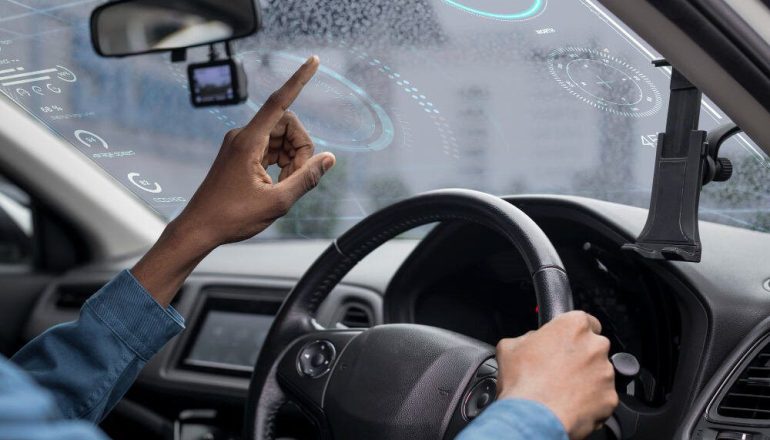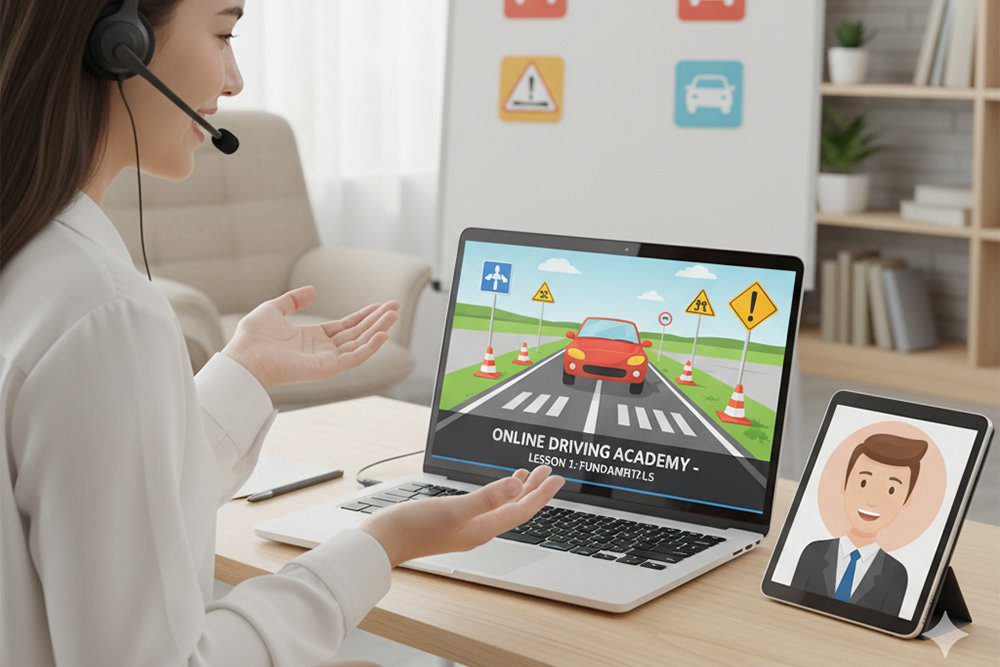Driving education in Mississauga is undergoing a massive transformation, thanks to the rapid integration of technology into training methods. The traditional model of classroom-based lessons and on-road practice is being complemented and enhanced by digital tools, online platforms, and simulator technology. As more students embrace flexible, tech-driven learning, driving schools across Ontario are evolving to meet these new expectations.
From online driving lessons Ontario programs to simulator training labs and G2 test prep tools, technology is reshaping how new drivers learn the rules of the road and develop safe, confident driving habits. This modernization is not just about convenience; it’s about creating smarter, safer drivers through immersive, data-driven education.
1. The Rise of Online Driving Lessons in Ontario
The concept of online driving lessons in Ontario has revolutionized the accessibility of driving education. In the past, learners had to attend physical classes to study traffic laws, safety regulations, and road signs. Today, all of that can be done from the comfort of home.
Modern driving schools in Mississauga offer digital driving education portals where students can log in, watch video lessons, complete quizzes, and even interact with instructors via video conferencing. This self-paced model allows students to revisit topics until they fully understand them—something that wasn’t possible in fast-paced, in-person classrooms. Furthermore, these online courses are fully compliant with the Ministry of Transportation Ontario (MTO) guidelines, ensuring that learners still meet all certification requirements.
Students can prepare for their G1 or G2 test with structured modules and performance tracking, making online driving lessons in Ontario both efficient and officially recognized.
2. Digital Driving Education: Personalized Learning Through Data
One of the greatest advantages of digital driving education is its ability to personalize learning. Using AI and data analytics, digital platforms can track a student’s performance—such as quiz results or simulator behavior—and identify areas needing improvement.
For instance, if a student struggles with right-of-way rules, the system can automatically assign additional materials or short video tutorials. This adaptive learning approach ensures that every student learns at their own pace and masters essential driving concepts before moving on. Driving schools in Mississauga are adopting mobile apps and digital dashboards where students can monitor their progress, schedule lessons, and receive feedback in real time. These interactive platforms not only increase student engagement but also encourage accountability and consistent practice—two key factors in successful driving education.
3. Simulator Training: Safe and Realistic Practice
A standout innovation in modern driving education is simulator training. Driving simulators use high-definition visuals, motion feedback, and realistic car controls to create lifelike driving experiences in a controlled environment. Students can practice different road scenarios—such as heavy traffic or icy roads—without facing real-world risks. For beginners, this builds confidence before hitting the actual road, while experienced drivers can use simulators to refine advanced skills like defensive driving or parallel parking.
In Mississauga, premium driving schools are investing in simulator training to prepare students for diverse road conditions, including those unique to Ontario’s varying weather. This technology bridges the gap between theory and practice, helping learners develop muscle memory and situational awareness faster than traditional methods.
4. Virtual Reality and AI in Driving Instruction
Beyond simulators, some driving schools are now experimenting with virtual reality (VR) and artificial intelligence (AI) to create even more immersive learning experiences.
- VR Headsets: Students can use VR to “sit” inside a 360° driving environment and interact with real-world situations—like pedestrians crossing suddenly or merging traffic on the QEW—without any physical vehicle.
- AI Feedback Systems: AI-powered tools can analyze a student’s driving behavior during practice sessions, detecting common errors such as late braking, sharp turns, or failure to check blind spots. These insights are then shared instantly with the instructor and student for targeted improvement.
This blend of innovation ensures that learners are not just passing their G2 test but also gaining real-world decision-making skills critical for safe driving.
5. G2 Test Prep with Technology
Passing the G2 test prep stage is often one of the most nerve-wracking parts of getting a driver’s license. Fortunately, technology is helping Mississauga students prepare with greater confidence and precision.
Online tools and apps now simulate the actual G2 test experience, offering mock exams that mirror Ontario’s official format. Students can practice route navigation, parking techniques, and maneuver timing through video tutorials or interactive tests. Moreover, some online driving lessons Ontario providers include AI-powered assessments that measure readiness based on performance data. This helps instructors determine when a student is truly prepared for the road test, reducing failed attempts and saving both time and money.
6. Hybrid Learning: Combining Online and On-Road Lessons
While online modules and simulators provide an excellent foundation, hands-on experience remains essential. That’s why many Mississauga schools now follow a hybrid learning model, combining digital education with real-world training. Students first complete theory lessons through online portals—covering road signs, driving ethics, and traffic laws—before moving to behind-the-wheel sessions. This ensures that learners show up for practical lessons already equipped with strong theoretical knowledge, making the on-road experience more focused and efficient.
Hybrid training models also benefit instructors, who can use digital records to track progress and tailor sessions based on each learner’s strengths and weaknesses.
7. Mobile Apps for On-the-Go Learning
Modern driving schools in Ontario have adopted mobile apps to make driving education more accessible and interactive. These apps often feature:
- Lesson Scheduling: Students can book or reschedule sessions in seconds.
- Instructor Feedback: Get notes, performance ratings, and personalized improvement tips after each session.
- Practice Quizzes: Quick quizzes to refresh knowledge of signs, signals, and rules.
- Progress Tracking: Visual dashboards showing course completion and readiness for the G2 test prep.
Apps make learning convenient, aligning with how they consume information—digitally and on demand.
8. Benefits of Digital Modernization for Students
The shift toward digital driving education brings multiple benefits for learners:
- Flexibility: Study anytime, anywhere, at your own pace.
- Affordability: Online lessons reduce administrative costs, making programs more budget-friendly.
- Enhanced Retention: Interactive videos and simulations improve memory recall.
- Confidence Building: Students gain experience in a safe, low-pressure environment before real-world driving.
- Accessibility: Ideal for students balancing school, work, or family responsibilities.
By embracing these innovations, Mississauga driving schools are setting a new standard for comprehensive, technology-driven driver education.
9. The Future of Driving Education in Mississauga
As Ontario continues to modernize its licensing processes, the integration of technology in driving education will only deepen. Future innovations may include:
- AI-driven performance tracking that uses sensors in training cars.
- Augmented reality (AR) overlays for real-time navigation training.
- Online certification systems that automatically update student records with MTO.
With Mississauga’s growing population and increasing demand for efficient learning models, these advancements will make driver education smarter, safer, and more accessible than ever.
Conclusion: Driving into the Future
Technology has transformed nearly every aspect of life—and learning to drive is no exception. Mississauga’s driving schools are embracing this evolution, ensuring that students are equipped not just to pass their tests but to become responsible, skilled drivers for life.
Whether it’s through online driving lessons Ontario, immersive simulator training, or innovative G2 test prep platforms, the message is clear: the future of driving education is digital. By combining traditional instruction with modern technology, Mississauga’s driving schools are paving the road to safer, smarter, and more confident driving across Ontario.
Frequently Asked Questions (FAQs)
Q1. Do Mississauga driving schools offer online lessons?
A: Yes, many Mississauga driving schools now provide online driving lessons in Ontario, allowing students to complete their theory and prep modules from home through interactive digital platforms.
Q2. How effective are driving simulators for training?
A: Simulator training is highly effective because it allows learners to practice real-world scenarios safely. Students gain experience with traffic, weather, and emergency conditions without physical risks.





